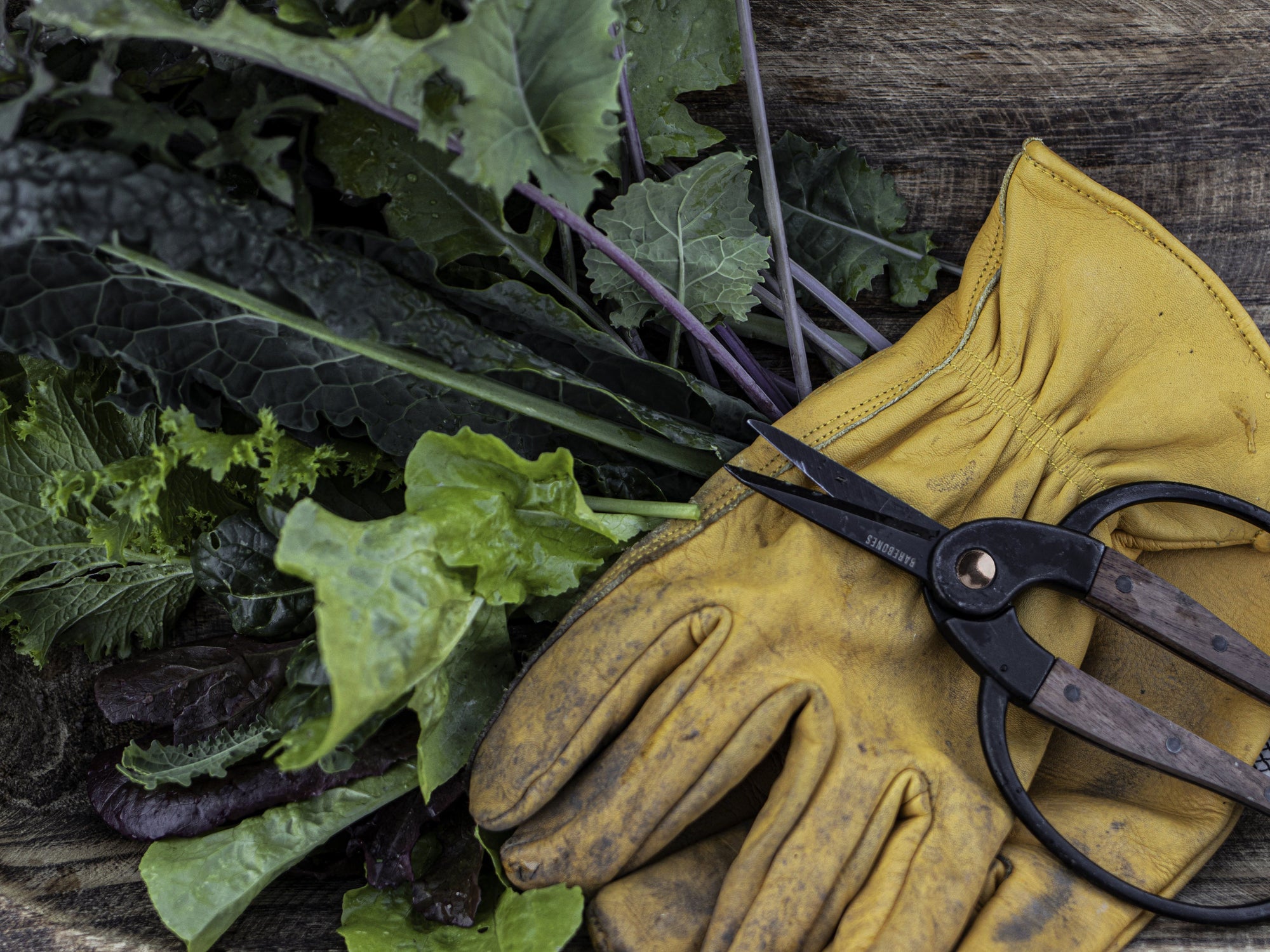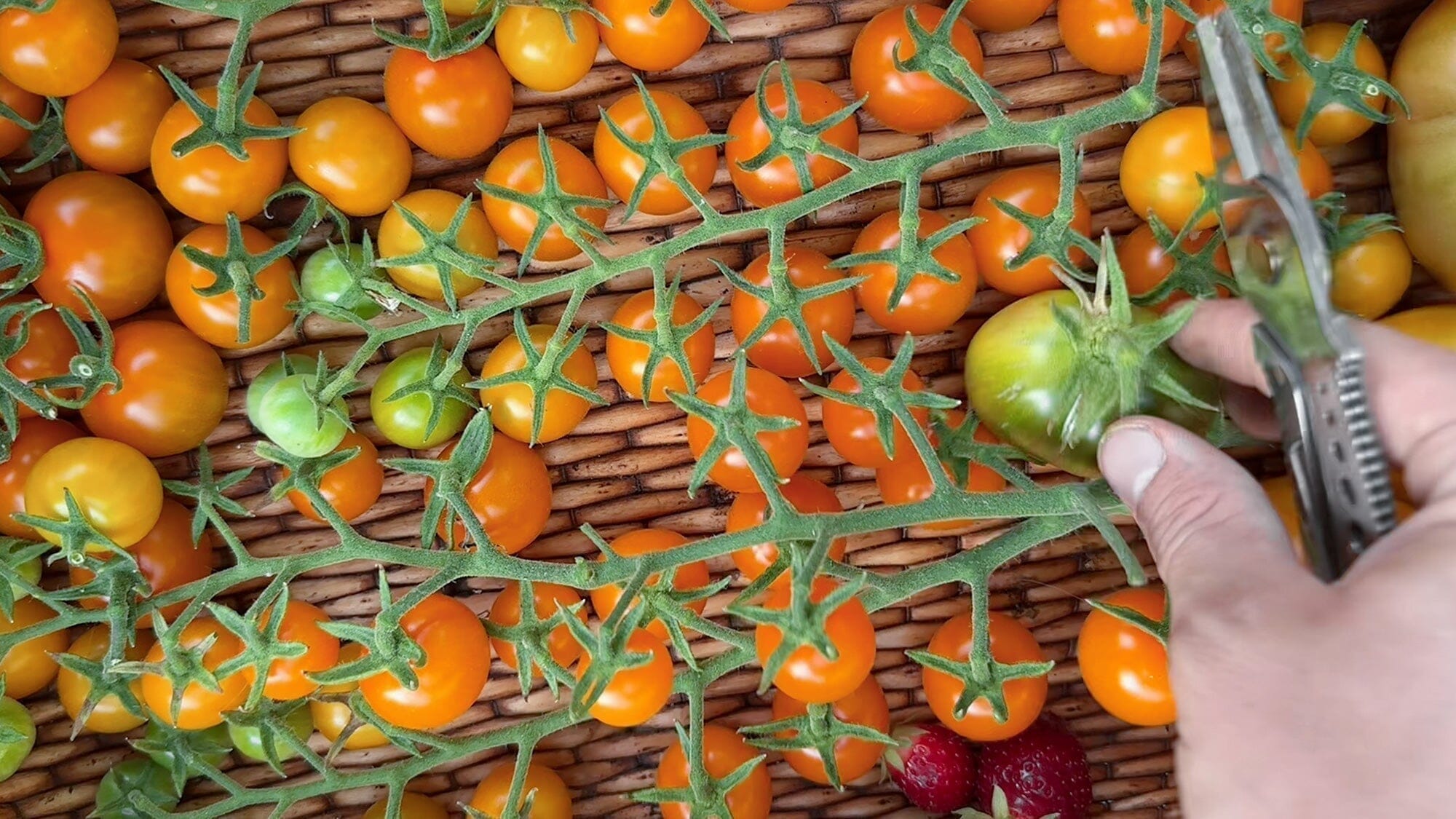By Brianne Dela Cruz; Gather & Grow
Whether you’re brand new to gardening or have had a backyard plot for many years, there are always new tricks to learn to increase yield and maintain success. Here are 5 tips from a Master Gardener to help keep your yard and garden healthy this summer.
1. Weed your garden beds regularly.
Getting behind on this task is the quickest way to lead to feeling frustrated and overwhelmed with a garden workload. Keeping up on weeding is important because it prevents prized plants from competing for resources (like water, nutrients, and sunlight) with less desirable volunteers that pop up. When plants get overrun by weeds, their growth becomes stunted, and they are more prone to disease and pest infestations. To avoid this, spend a quick 15 minutes outside each day pulling weeds. Weeding a little bit every day can transform this chore into a relaxing meditative escape into nature. Plus, a well maintained outdoor space always creates a more inviting environment to gather and linger.
2. Water your garden properly.
By the time summer is in full swing, precipitation levels dip while temperatures soar. This environmental shift means that you need to re-evaluate watering cadence and the amount to suit the needs of plants. Both overwatering and underwatering are great ways to kill plants. Overwatering creates ripe environments for disease and bacterial infections. It can also remove valuable nutrients from the soil, ultimately depriving plants of food. My watering rule of thumb is that you can never water plants too much at one time, only too often. It’s best to water deeply, but less frequently. In order for plants to thrive, soil should be as moist as a wrung-out sponge: not overly saturated and not dry.
Watering cadence and volume vary widely depending on environmental factors such as rainfall, humidity, and soil type. However, gardens that are established oftentimes only need to be watered once every 4-10 days. Yards with native plants, trees, and perennial shrubs require supplemental watering significantly less because native plants are already adapted to local precipitation patterns. At the time of watering, soil should become thoroughly saturated at least 8-10 inches down into the soil for vegetable gardens, and deeper for shrubs and trees. The goal is to saturate the soil as deep as the plant’s root system extends, then allow days to pass so plants can soak up that water. Applying that amount of water in one deep watering, less frequently, will encourage deeper rooting which leads to stronger, healthier plants.
3. Harvest and prune your garden to inspire continual growth.
Both annuals and perennials need regular pruning and harvesting in order to grow into robust and productive plants. Whether they produce a flower, fruit, or leaves, a little cutting can go a long way in maintaining their health and vigor. Skipping this particular maintenance task can leave plants vulnerable to infectious diseases and pest infestation, as well as hamper new growth.
Prune herbs after their first flowering to inspire a second round of flowering, and to prevent them from becoming sparse and leggy. Prune out dead, damaged, or yellowing parts of plants, as well as spent flowers, to inspire new growth. Harvest edible leafy greens so they continue to produce more leaves throughout the season. Harvest vegetables and fruits when they are ripe on the vine so the plant continues to grow more fruit and doesn’t become susceptible to disease and pest infestation from rotting.
4. Fertilize your garden regularly.
It’s important to provide enough nutrients to your yard and garden so your landscape can flourish. Ornamental landscapes do well with one or two applications of slow-release fertilizer each growing season. The best timing for this occurs at the start of summer and just after mid-summer. Non-edible landscapes that include shrubs, lawn, and trees, should not be fertilized at the end of summer because these plants are beginning to prepare for dormancy. On the other hand, edible gardens require more frequent applications of fertilizer, about once every 2-4 weeks, because they are producing nutrient-dense edible produce. When fertilizing edible gardens, follow the directions on the fertilizer label as closely as possible to ensure the best results. I recommend using an organic fertilizer that is meant for growing organic vegetables. Non-organic fertilizers often contain toxic chemicals that should not be ingested through edible crops.
5. Patrol your garden daily.
This task can be the most relaxing and proactive thing you can do in your garden. Patrolling the garden a few minutes each day gives an opportunity to monitor growth and health of plants so that you can catch and mitigate problems quickly. Let the daily patrols be an opportunity to relax in the garden or involve the kids in “bug hunts”. Be on the lookout for insects in the center and underside of leaves, leaf discoloration, plant damage, and overall plant vigor. Insects in the garden are a sign of a healthy garden ecosystem, however, an outbreak of pests devouring prized edible crops is an issue that needs to be addressed before irreparable damage occurs. Pests can easily be removed by hand or mitigated with an organic pesticide, like neem oil. Discoloration in leaves and plant vigor can be an indication of improper watering, lack of soil nutrients, or the spread of an infectious disease. Regular monitoring helps us all to stay ahead of garden tasks in order to keep plants thriving and happy.

ABOUT
Brianne Dela Cruz is a master gardener, wild forager, campfire foodie, and acclaimed writer and photographer. From her home in Salt Lake City, she teaches online gardening and foraging courses for modern folks and budding naturalists as well as hosts seasonal community gatherings. Brianne's blog and online school, Gather & Grow, is a community of folks exploring the intersection between nature and personal growth by discovering ways to slow down and nourish themselves with nature.







